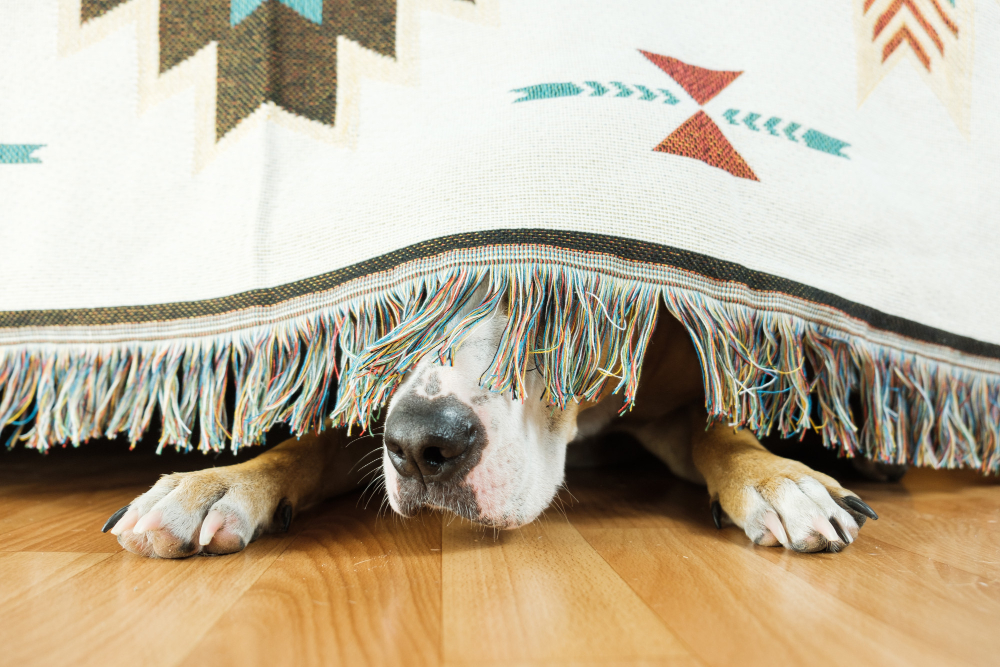While pets are naturally a source of joy and companionship, as all animals are, some do not come off as friendly. For many other pet owners too, having a guest over can sometimes be a stressful ordeal because of his pet’s fear or anxiety when confronted with the presence of strangers. If either of these scenarios describes your pet behavior, do not despair. Effective strategies exist that will enable your furry friend become more comfortable in the presence of visitors to your home.
Understand Your Pet’s Fear
Understanding the reasons, or root causes, behind your pet’s fear is the first step to resolving the problem. Though it is believed to be a breed-specific trait, not every animal may be fearful; this is definitely an individual aspect which can differ among animals. Several factors may lead to your pet’s anxiety or fear towards people and these aspects are critical in coming up with effective interventions.
Importance of the Imprinting Period
During the imprinting period, most of the experiences that will occur in pets’ lives, and especially puppies, happen. During that moment when an animal learns all the important social cues and lifestyles just from watching and copying mother and siblings. The period normally experiences the puppy up to around 60 days of its age. Puppies separated from their family groups before this age are always more insecure and worried in new situations whether it involves other animals or humans. For more information on this crucial stage, check out the article of Puppy Imprinting and Socialization.
Structure and Routine
Structure and routine can do a lot to help your pet feel secure. Pets are such creatures of habit that a fairly consistent daily schedule helps the pet to learn what is expected pretty well at various times of the day. Feeding, walks, playtime, sleep – all should come routinely and help your pet feel more relaxed and secure.
Long Lasting Effects of Negative Experiences
Negative experiences seem to display effects long lasting in your pet’s behavior. Especially if older, animals which are rescued often display fearfulness or aggression. This behavior may come about via pets exposed to physical abuse particularly very serious disciplinary actions. It is the essential side that it never resorts to physical aggression as a form of punishment. In case your pet is in need of some discipline, select a trainer who follows positive reinforcement techniques.
Scope out Specific Causes
May be the fear of your pet gets exaggerated by specific incidents that create negative associations with either human beings or other pets. It is important to figure out what these triggers are in order to know how to deal with the root cause of the fear. If, for example, your pet feels fearful when guests come over, try to determine what exactly it is that generates this reaction—Is it the doorbell? Is it seeing strange faces?
Recognizing Signs of Fear in Your Pet
Recognizing signs of fear or discomfort calls for you to be observant of your pet’s behavior. There are different stimuli that indicated the emotional state of your pet and should you know them, it can enable you to act in a proper manner. Some of the most common signals that are exhibited include:
Aggressiveness as a Defense Mechanism
Often, the manifestation of underlying fear is in aggressive acts such as growling, barking, or lunging at people. Your pet will do whatever it can to set its boundaries and its actions must be taken seriously. Professional intervention should immediately be sought since it might cause an accident or result in injuries if not attended to right away.
Tendency of hiding
If pets are fearful, they typically take shelter in secluded places like behind the furniture or within dark corners. This is an indication of how your pet is not okay with the situation and is asking to lead them to a safe place.
Attention-Seeking and Protective Reactions
Some pets, even in the presence of unfamiliar people in its environment, it becomes attention-seeking. It may very well persistently seek your listen as though to inform you that there is a ‘stranger’ in your house. While that can often be dubbed as a sheer form of jealousy, it is indeed instinct to protect its alpha member. Your pet here is not only worried about its safety but in their own animalistic way, trying to safeguard you.
Strategies for Socializing a Fearful Pet
These include understanding, patience, and strategic intervention to address the fear in your pet. Here are several comprehensive strategies to make your pet more sociable and comfortable around visitors:
Establish the Safe Space
Designate a “safe-zone” in your home. Set aside an area of the house where your pet likes to spend time, complete with all his toys, bedding and favourite comfort items. Indicate that this is out-of-bounds for visitors, giving your pet a retreat to bolt to if all the activity gets too overwhelming.
Gradual Exposure and Controlled Interaction
Pushing your pet into uncomfortable situations will only lead to the fear becoming even worse. Instead, it is advisable to introduce new people or other animals gradually. Let them decide on their own terms when they are ready to approach, and at first, simply allow them to observe from a safe distance. This respects your pet’s boundaries while still giving them the chance to initiate the interaction.
Seek Professional Help and Offer Positive Reinforcement
If your pet’s fear is severe or results in aggressive behavior, consider seeking help from a professional animal behaviorist or trainer who might have specialized techniques and positive reinforcement strategies that could help your pet to overcome over with its fears. Positive reinforcement involves rewarding good behavior that can help reshape responses of your pet’s towards stressors.
Consistent Routine and Structured Activities
A uniform daily routine can provide a sense of security to your pet. Stick to a scheduled time for regular feeding, walks as well as play helps your pet feel comfortable. Engage your pet in structured activities with other pets such as group training classes or even a pet daycare facility.
Patience and Monitor the Progress
Socialization is a process that takes time and requires a lot of patience with a long-term commitment and continuous effort. Be ready for setbacks and celebrate little victories along the way. It is unwise to take immediately upon yourself more difficult social scenarios if you detect any improvement since this might stand in the way of another small advance. In this phase, the kennel choices are brought into consideration. The article Choosing the Right Kennel, may provide some helpful tips during this process.
Concluding: Comfortable Environment for Your Pet and Guests
Understanding then addressing the fear of your pet regarding the visitors is a multilayered process that takes a blend of empathy and observation, followed by strategic action. Determine the cause of your pets’ anxieties, identify behavioral cues corresponding with those causes, and develop socialization tactics that work uniquely for you to create a more harmonious environment for you and your guests. You need to approach the task with patience and committed to your pet’s well being as change will not come overnight. And it doesn’t matter whether it is consulting articles on the imprinting and socialization of puppies or choosing the perfect kennel, or rather in search for expert guidance every step you take brings you one step closer to a solution. Ultimately, the ideal is for your pet to feel secure and your guests welcome, making for a peaceful coexistence for everyone involved.

